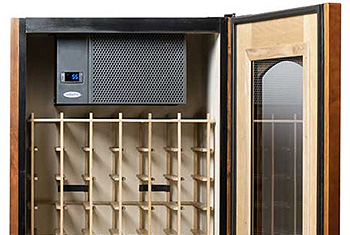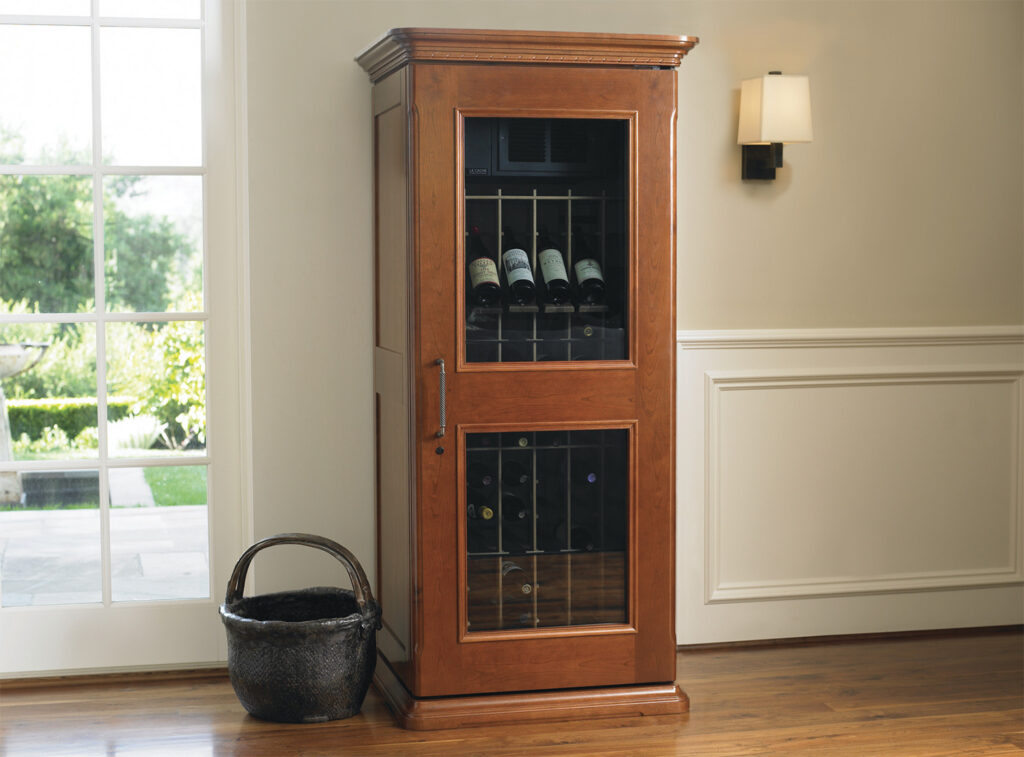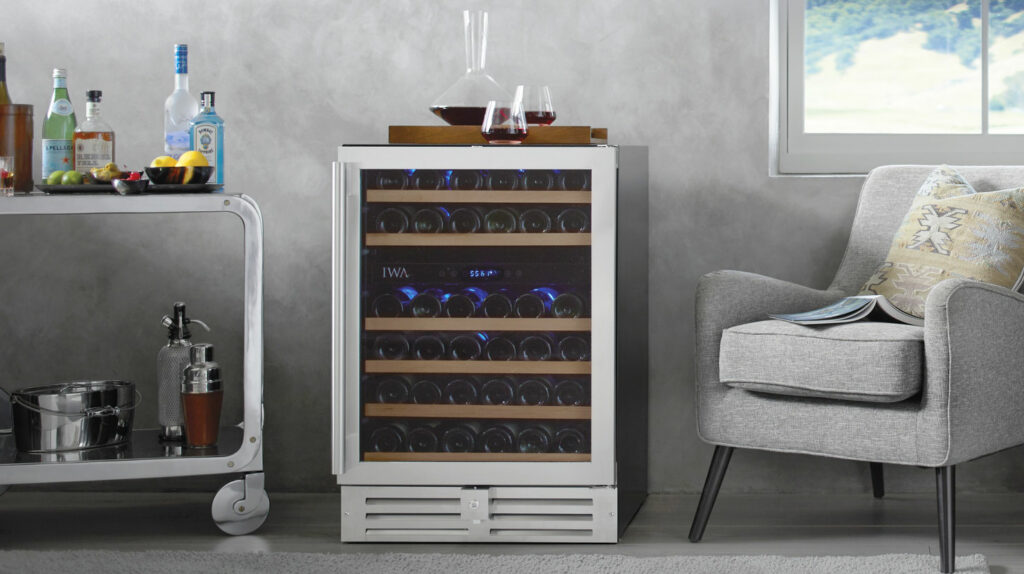
Here are questions from our customers that we have been happy to answer, that you may find helpful when preparing a wine storage space.
What are the ideal conditions to properly store my wine collection?
There are three issues that will affect the proper storage of wine: light, temperature and humidity. UV rays from light will damage wine by breaking down the organic compounds in wine that contribute to its aroma, flavor and overall structure. An ideal location should be dark. Humidity is a consideration because of the corks used in sealing wine bottles. A relative humdity of 60% – 70% is ideal. Low humidity can lead to failures in the cork seal and then the low humidity condition would cause faster evaporation of the wine. Assuming we can find a dark place with sufficient humidity, temperature is the most important factor in properly storing wine. A cool stable temperature keeps wine from aging too rapidly and preserves its characteristics. Most European wine caves have a naturally occurring temperature of about 13º Celsius or about 55º Fahrenheit with about ±1º fluctuation. Since wine has been historically stored at this temperature with great success, 55ºF is the ideal temperature most experts agree on.

What happens if I store my wine at room temperature?
Quite simply, it will age faster with unpredictable results. As wine sits in a bottle, a chemical change is occurring with the compounds in the wine. This change is natural and over time alters the aromas and flavors in a wine. This change is what makes wine a living thing and continues to make it interesting year after year. If we were to give a value to the rate of change in a wine, where a factor of 1.0 equals the change in wine stored at the ideal temperature, then wine stored between 55ºF to 59ºF would change at a rate of about 1.2 to 1.5. If you stored your wine at a room temperature of about 73ºF, it would change at a rate of 2.1 to 8.0. What do all these numbers mean? Well, if you store your wine at 59ºF, after 4 years your wine will have aged the equivalent of wine stored at 55ºF for 6 years. That same wine stored at 73ºF for 4 years will have aged the equivalent of wine stored at 55ºF for 8 years to as much as 32 years! 8 times faster than wine stored at the ideal temperature. And for comparison, wine stored at over 91ºF will change at a rate of over 56. That means that a wine stored for just 3 months at 91ºF will age the equivalent of wine stored at 55ºF for 14 years! That’s a significant change in the span of what amounts to one summer in Texas. If you have a small collection and you generally consume your red wine within a year or two, keeping your wine in a cool dark closet should be fine.
If 55ºF is a good temperature for wine, wouldn’t 40ºF be even better?
Not necessarily. 40ºF is the typical temperature of a household refrigerator. Just as higher temperatures increase the rate of change in a wine’s characteristics, a lower temperature would decrease that change. Many winemakers will tell you that bottle aging will improve many wines and often recommend waiting a few years for tannins to soften and flavors to open up. If you store a wine too cold, that change may never occur. As said previously, storing wine in a bottle produces chemical changes. At 55ºF, these changes occur in a well-orchestrated manner and historically produces desirable results. However, at 40ºF, some chemical changes are slowed to the point where they effectively don’t happen while other chemical changes will still occur. The changes in the wine are now unbalanced or out-of-sync and could produce undesirable aromas and flavors. Therefore, it’s probably best to store wine in a cellar and not in a refrigerator.

Can’t I just put a cooling unit in my room or closet to keep my wine cool?
No. Since the room will be cooled to 55º-59ºF it needs to be properly insulated and have an adequate vapor barrier installed. A vapor barrier is an often misunderstood yet important component to a wine room and as a result is often omitted or installed incorrectly. The vapor barrier performs three major functions in a wine cellar: 1) it protects the structure and insulation from condensation damage, 2) it prevents air leakage, and 3) maintains proper humidity levels inside the room. In order for a vapor barrier to work properly, it must be installed on the warm side of the insulation. This is because condensation occurs as water vapor moves from the warm side of the wall to the cold side. If a vapor barrier is installed on the cold side, it traps moisture inside the envelope, making moisture problems worse and possibly causing wood rot in the supporting structure.
Don’t the wine bottles need to be on their side because the corks need to stay wet?
Not really. Recent studies have shown that Champagne is best stored upright and another study that was conducted on still wine over a 2 year period showed there was virtually no negative effect to the wine. No study has been done beyond 2 years so for long term storage it’s best to have them lying down, but this study shows that there is more of a gray area than some people have been led to believe.
Is there a question I didn’t cover? Feel free to give one of our knowledgeable sales consultants a call at (800) 527-4072 x1 to get your questions answered.